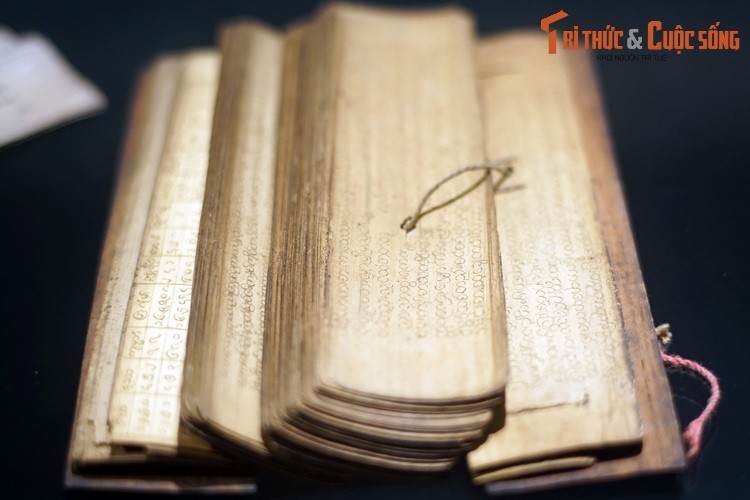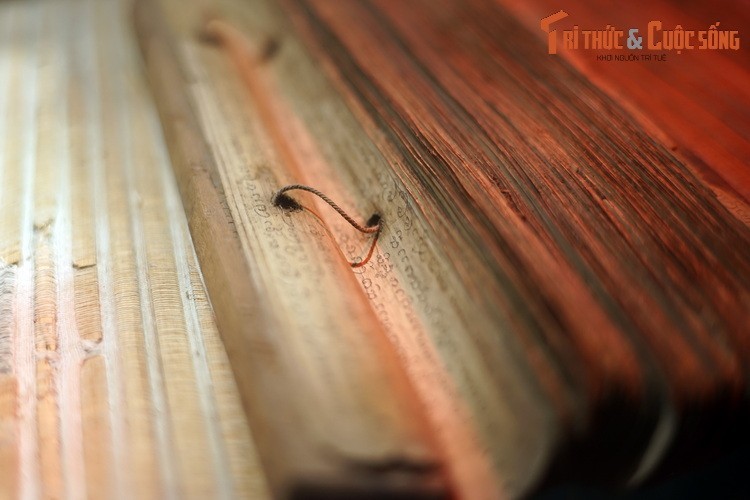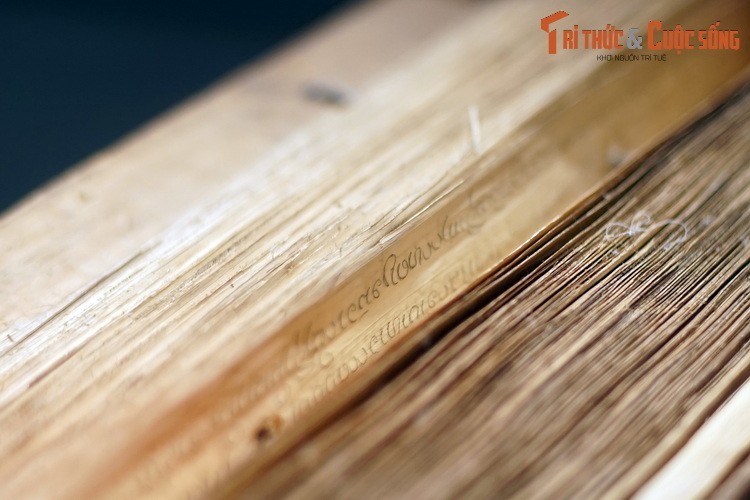Pages of the Past: Ancient Leaf Books Displayed In Hanoi
Palm-leaf manuscripts are manuscripts made out of dried palm leaves. Their use began in South Asia and spread to other regions, as texts on dried and smoke-treated palm leaves of the Palmyra palm or the talipot palm. The practice continued until the 19th century when printing presses replaced hand-written manuscripts.
 |
| Photo: Tri Thuc va Cuoc Song |
Vietnam Museum Of Ethnology in Hanoi is home to a unique collection of palm leaf books collected from Laos, Myanmar, and Indonesia. This is a unique way of storing texts, dating back to the 5th century BC in the Indian subcontinent, then spreading to Southeast Asia.
 |
| Photo: Tri Thuc & Cuoc Song |
The text in palm leaf manuscripts was inscribed with a knife pen on rectangular cut and cured palm leaf sheets; colorings were then applied to the surface and wiped off, leaving the ink in the incised grooves. Each sheet typically had a hole through which a string could pass, and with these, the sheets were tied together with a string to bind like a book.
When reading, one turns over each leaf, similar to reading a normal book. The contents of the palm leaf books include manuscripts on Hindu philosophy, poetry, grammar, and other topics.
 |
| Photo: Tri Thuc & Cuoc Song |
A palm leaf text thus created would typically last between a few decades and about 600 years before it decayed due to dampness, insect activity, mold, and fragility. Thus the document had to be copied onto new sets of dried palm leaves.
Hindu temples often served as centers of learning, where ancient palm leaf manuscripts were used for study, and where the texts were copied when they were old.
 |
| Photo: Tri Thuc & Cuoc Song |
The oldest palm leaf books have been found in regions with cold, dry climates, usually in the high mountain regions of India, Nepal, Tibet, and Central Asia. Many of these manuscripts date back more than 1,000 years.
The round and cursive design of the letters of many South Indian and Southeast Asian scripts, such as Devanagari, Nandinagari, Kannada, Telugu, Lontara, Javanese, Balinese, Odia, Burmese, Tamil, Khmer, and so forth, may be an adaptation to the use of palm leaves, as angular letters could tear the leaves apart.
 |
| Photo: Tri Thuc & Cuoc Song |
With the advent of the printing press and the conquest of the West in the early 19th century, the prosperous era of palm leaf books came to an end. The palm leaf book collection of the Vietnam Museum of Ethnology dates to the early 20th century, belonging to the group of the last palm-leaf books written.
Today, palm leaf books are recognized as a precious heritage in the treasure of human civilization. Many governments in the region are working to preserve the special manuscripts that the ancients left for posterity on palm leaves.
The post Pages of the Past: Ancient Leaf Books Displayed In Hanoi appeared first on Vietexplorer.com.
View more from VietExplorer:
Ethnic Vietnamese woman debuts on a sweet note with homegrown nectarSustainable architectural solutions should anticipate pandemic situation
South Phu Quoc: A corner of paradise in the Pearl Island
Japanese artist introduces Butoh dance
Primeval rock pool in Quang Nam
Thua Thien Hue to pilot night-time economic activities in Con Toc area
Music makes noted contributions to fight against COVID-19
Ronaldo takes United joint top with Chelsea, City win and Spurs slump
Voting round begins for online book review contest
Mu Cang Chai tourism hit hard by pandemic
Top Vietnamese, Chinese leaders hold phone talks
President Nguyen Xuan Phuc visits Pfizer corporation
The 100-year-old symbol of Hue Citadel
Beauty of iconic bridges across Vietnam
Binh Dinh province to restore Cham towers to create tourist attraction
Arousing the tourism potential of Bac Kan province
President meets German counterpart, concludes US trip
Drinking up on Vietnam’s tea culture
Domestic travel reopens, but under Covid-19 safety conditions
Ethnic Cao Lan group treasure traditional costumes
Comments
Post a Comment